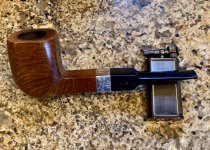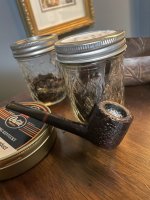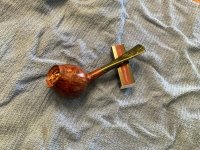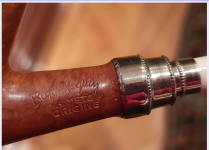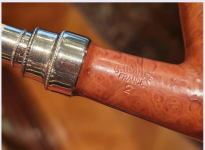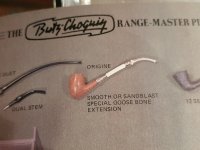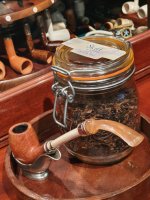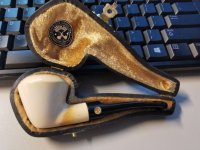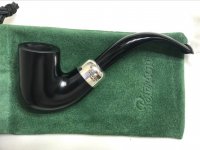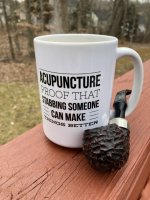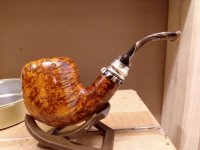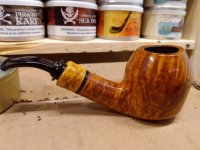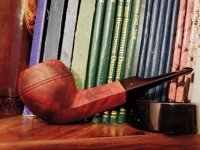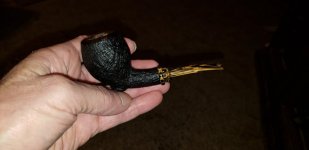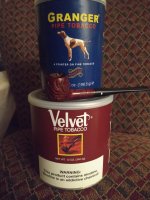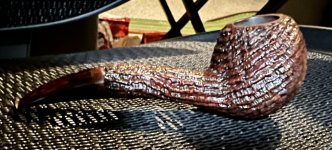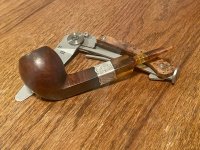***What Are You Smoking, February 2022?***
- Thread starter JimInks
- Start date
You are using an out of date browser. It may not display this or other websites correctly.
You should upgrade or use an alternative browser.
You should upgrade or use an alternative browser.
SmokingPipes.com Updates
Watch for Updates Twice a Week
- Status
- Not open for further replies.
RDF in Brigham straight apple.
St. Bruno: Ready Rubbed in a Meer...

King Charles Smoking Mixture in a Peterson Irish Harp XL90.
GLP Barbary Coast, cube cut burley based with red Virginia and Perique as condiments and brandy as flavoring, in a bent Dublin Sav. GLP has a fine hand with burley, to warm this old burley devotee's heart.
This expression appears to date from the early 20th century ...I feel like "I can not see 3 on a donkey". Olé!
"Origen
A principios del siglo XX, en zonas del campo de Andalucía, hubo una campaña para detectar problemas de vista y ayudar a las personas más pobres a solucionar su problema. Estas personas eran casi todas analfabetas, no sabían ni leer ni escribir. Por esta razón, los oftalmólogos no podían utilizar las imágenes tradicionales con letras para medir las dioptrías. En su lugar utilizaban imágenes, dibujos y fotografías que las personas sí sabían interpretar. Una de ellas era la de tres personas montadas en un burro.
At the beginning of the 20th century, in areas of the Andalusian countryside, there was a campaign to detect sight problems and help the poorest people solve their problem. These people were almost all illiterate. For this reason, ophthalmologists could not use traditional images with letters to measure diopters. Instead they used images, drawings and photographs that people knew how to interpret. One of them was that of three people riding a donkey.
Significado
La expresión “no ver tres en un burro” la usamos cuando una persona no ve absolutamente nada. Una expresión con el mismo significado es “ver menos que Pepe Leches” o “estar más ciego que un murciélago / topo”.
The expression, "can't see three people on a donkey" was used when people see nothing. It is an expression with the same significance as, "see less than Papa Leches" or ...
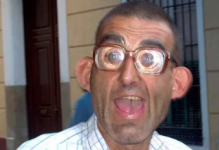
... "be blinder than a bat/mole"
Courtesy Academia Andalusia
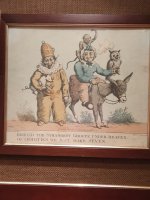
Although the print is one hundred years older than the Spanish expression and has a somewhat different meaning - there are only six characters in the picture yet the text refers to seven ... the explanation can be found on The British Museum website for anyone interested.
"Curator's comments, The visual joke "We are Seven", in which the viewer makes up the number of foolish persons"
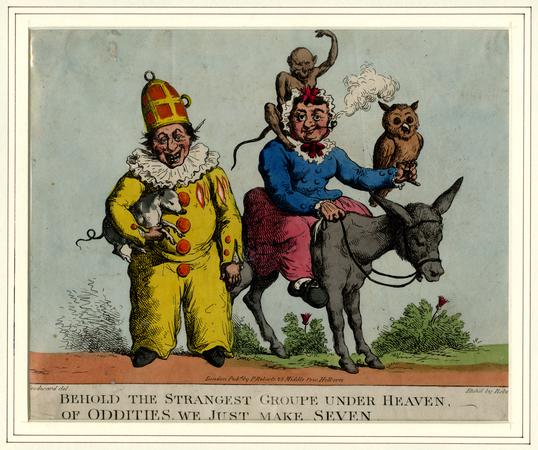
print; satirical print | British Museum
A clown holding a pig stands beside a woman riding astride an ass with a monkey on her shoulders and an owl perched on her left hand Hand coloured etching
Good luck!Good night. We started smoking with. Amphora Full, in a pipe Peterson. Let's give it a little more stress, this pipe smokes very well. It is easier to clean than a cob, the cob gets wet very easily, and needs several days to dry. However, heather can be smoked 10 times in one day. I had a job interview today. Let's see if we are lucky and start working and being productive. Waiting for my new glasses, because I can't see three on a donkey. Just like my friend Christos. Oh yeah, let's be positive baby..........View attachment 129185
- Status
- Not open for further replies.







